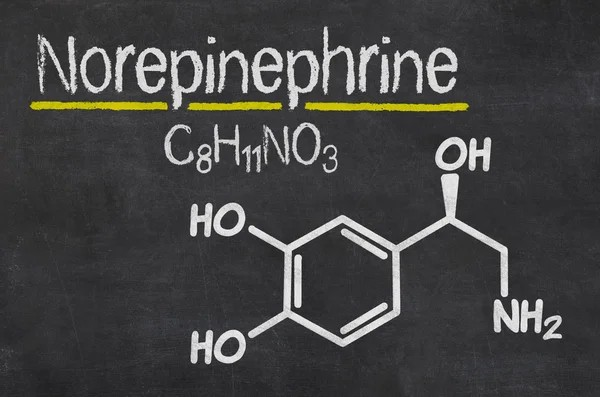Noradrenaline, Mechanism of Action, Effects
Noradrenaline, Mechanism of Action, Effects
Presentation and Uses
Noradrenaline is presented as a clear solution containing 0.2–2 mg.ml−1 noradrenaline acid tartrate, which is equivalent to 0.1–1 mg.ml−1 of noradrenaline base, and contains the preservative sodium metabisulfite. It is used as an intravenous infusion (dose range 0.05–0.5 μg.kg−1.min−1) to increase the systemic vascular resistance.
Mechanism of Action
Its actions are mediated mainly via stimulation of α1-adrenoceptors but also β- adrenoceptors.
Effects
• Cardiovascular – the effects of systemically infused noradrenaline are slightly different from those of endogenous noradrenaline. Systemically infused noradrenaline causes peripheral vasoconstriction, increases systolic and diastolic blood pressure and may cause a reflex bradycardia. Cardiac output may fall and myocardial oxygen consumption is increased. A vasodilated coronary circulation carries an increased coronary blood flow. Pulmonary vascular resistance may be increased and venous return is increased by venoconstriction. In excess it produces hypertension, bradycardia, headache and excessive peripheral vasoconstriction, occasionally leading to ischaemia and gangrene of extremities. Extravasation can cause tissue necrosis. Endogenously released noradrenaline causes tachycardia and a rise in cardiac output.
• Splanchnic – renal and hepatic blood flow falls due to vasoconstriction.
• Uterus – blood flow to the pregnant uterus is reduced and may result in fetal bradycardia. It may also exert a contractile effect and cause fetal asphyxia.
• Interactions – despite being a direct-acting sympathomimetic amine, noradrenaline should be used with caution in patients taking monoamine oxidase inhibitors (MAOIs) as its effects may be exaggerated and prolonged.
Kinetics
For endogenously released noradrenaline, Uptake 1 describes its active uptake back into the nerve terminal where it is metabolised by MAO (COMT is not present in sympathetic nerves) or recycled. It forms the main mechanism by which noradrenaline is inactivated. Uptake 2 describes the diffusion away from the nerve and is less important. Noradrenaline reaches the circulation in this way and is metabolised by COMT to the inactive VMA and normetadrenaline, which is conjugated with glucuronic acid or sulfates, both of which are excreted in the urine. It has a short half-life (about 2 minutes) due to rapid metabolism. Unlike adrenaline and dopamine, up to 25% is taken up as it passes through the lungs.



